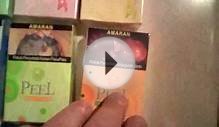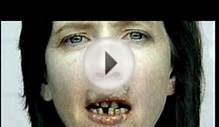
Cancer cigarettes
Although cigarette smoking has been steadily—but slowly—declining in the United States, many different alternative tobacco and nicotine delivery products have been gaining popularity. This is partly because many alternative tobacco products—which come in various sizes, flavors, and forms—are marketed and often perceived as being relatively safe.
However, alternative tobacco products, such as e-cigarettes, smokeless tobacco, and waterpipes may cause serious potential health problems, including cancer, because of the chemicals and toxins they contain. If you smoke or use these products talk with your doctor about ways to quit.
E-cigarettes
Electronic cigarettes, also known as e-cigarettes or vapor cigarettes, are battery-operated devices that resemble traditional cigarettes. However, instead of burning tobacco, they generally contain cartridges filled with nicotine and other chemicals. When the e-cigarette is used, the liquid chemicals in the cartridge are turned into a vapor or steam that is inhaled by the smoker.
E-cigarettes may contain harmful substances. However, the types or concentrations of chemicals, including nicotine, vary based on the brand. Because e-cigarettes have only been readily available in the United States since 2006, there is limited research on their health risks.
Among all of the alternative tobacco products, e-cigarettes are the least regulated. They have no warning labels and can be sold to people of any age. The FDA has not approved e-cigarettes as a way to quit smoking. People with cancer who want to quit smoking should use the approved methods for quitting smoking.
Smokeless tobacco
Smokeless tobacco products contain tobacco or tobacco blends that are either chewed, sucked, or sniffed. Most smokeless tobacco products are placed between the cheek or lips and gums for a few minutes to hours. They have many names, such as spit tobacco, chew, pinch, or dip, and fall into several categories.
Chewing tobacco. This is tobacco in the form of loose leaves, leaves pressed together that is commonly known as “plug”, or leaves twisted together to resemble a rope that is commonly known as “twist.” Chewing tobacco is held between the cheek and gum. Usually the tobacco juices are spit out, but long-time users tend to swallow some of the juices.
Snuff. This is finely ground tobacco that comes in dry or moist forms and is sometimes packaged in ready-to-use pouches. Dry snuff is usually sniffed or swallowed, whereas moist snuff—similar to snus (see below)—is placed between the gum and the lip or cheek and slowly absorbed.
Snus. This is a tobacco product that originated in Sweden before being introduced to the United States. The moist tobacco powder is usually packaged in a pouch and placed in the mouth, inside the cheek, for absorption. It does not require the user to spit out tobacco juice; however, the pouch must be thrown away after use, not swallowed. Tobacco companies often market snus as a product that cigarette smokers can use in places where smoking is banned. Public health advocates worry that laws banning smoking in certain public places will not effectively encourage people to quit using tobacco products as long as snus is available.
Dissolvable tobacco. This is powdered tobacco that is compressed to resemble a small, hard candy that dissolves in the mouth. It does not produce any tobacco juice that needs to be spit out or leave behind any substance that the user must throw away.
VIDEO REVIEWS



Share this Post
Related posts
Tobacco history facts
Nicotine was isolated from tobacco leaves ( Nicotiana tabacum ) in 1828, but the powerful effects of nicotine were already…
Read MoreHistory of tobacco Regulation
National Commission on Marihuana and Drug Abuse THE BAN ON ADVERTISING Both the U.S. Public Health Service and Federal Trade…
Read More
 Mount Sinai Hospital, founded in 1852, is one of the oldest and largest teaching hospitals in the United States. In 2011-2012, Mount Sinai Hospital was ranked as one of America's best hospitals by U.S. News & World Report in 12 specialties.
Mount Sinai Hospital, founded in 1852, is one of the oldest and largest teaching hospitals in the United States. In 2011-2012, Mount Sinai Hospital was ranked as one of America's best hospitals by U.S. News & World Report in 12 specialties.









